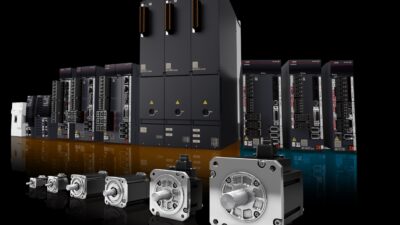A remote field instrument is a device used to sense a physical parameter such as pressure or temperature. This measurement is translated to a signal current in the range of 4-20 mA which is proportional to the measured variable. The 4-20 mA standard has provided an excellent platform for the development of process instrumentation.
KEY WORDS
Process control & instrumentation
Process control systems
Remote field instrumentation
Intelligent instrumentation
Data acquisition and control
A remote field instrument is a device used to sense a physical parameter such as pressure or temperature. This measurement is translated to a signal current in the range of 4-20 mA which is proportional to the measured variable. The 4-20 mA standard has provided an excellent platform for the development of process instrumentation. Its advantages include:
Measurement signals are not affected by changes in loop resistance;
Transmitters from one manufacturer can be interchanged with those from others; and
Power required to energize the transmitter circuits can be derived from the loop voltage.
Field instruments that incorporate a digital communications channel are termed “smart” and “intelligent.”
Resolving front-end issues
Designers of remote field instruments are challenged with achieving increased accuracy and functionality while reducing power consumption, cost, and layout area in system designs. The front-end data acquisition section of a remote instrument must measure small signals generated from sensors such as pressure bridges, RTDs, or thermocouples and resolve these signals to a resolution of 16 bits or better. A typical pressure transducer with a sensitivity of 3 mV/V gives a maximum output of 15 mV using 5 V excitation.
In data acquisition providing 16-bit resolution, changes of 230 nV in the transducer output voltage must be detected. Major tasks involved in designing such systems include signal conditioning of the transducers output signal, acquiring and processing the signal to achieve the required resolution and accuracy, and integrating the solution.
A traditional data acquisition system consists of independent elements which multiplex, signal condition, filter, and digitize the signal from the input transducer. Integration reduces the board-area requirement and the layout issues associated with low-signal-level analog design. It also lowers system cost and improves performance. Recent advances in design techniques incorporating switched capacitor and sigma-delta technologies enables low-cost, low-power, highly accurate, and integrated solutions.
Figure 1 shows a complete analog front-end solution featuring direct transducer interface controlled via a three-wire serial interface from a microcontroller. Integrated data acquisition systems, whether single or multichannel, provide a complete analog front end target for low frequency applications. These devices provide programmable gain, a fully differential analog input stage, and an analog-to-digital converter with performance of up to 24-bits resolution with no missing codes.
On-chip calibration features remove gain and offset errors in the device and in the system. Errors due to temperature drift can also be calibrated. Serial interfacing allows the system to operate with three wires thus allowing isolation to be achieved with three opto-couplers. Devices can handle input signal spans from 20 mV to 2.5 V unipolar or bipolar, allowing direct transducer interface without the requirement for signal conditioning circuitry. Power consumption, a critical specification in determining component choice, is typically 500 mA using this integrated solution. System level devices are available in small outline surface mount devices for applications where package size is critical.
Electronic circuits that interface the transmitter to the loop fulfill two main functions;
Power the transmitter from the loop; and
Control loop current to represent the process variable.
In the case of the latter, this may be either dc or ac transmission.
Supplying transmitter power
Transmitter electronics operate on a very meager ration of power. They are loop powered and must “live” below the minimum transmitted current level of the signaling range. The circuits that can live within this power budget (typically linear regulation to convert loop power to an operating supply for the internal electronics.
Linear regulators featuring low dropout are used where the total quiescent current of the transmitter electronics is below the low-alarm level defined for the system. Because most loop-current control circuits use a current-boost technique, it is impossible to reduce the controlled current below the quiescent level at which the transmitter’s electronics function.
Transmitters that cannot operate within the current budget of 3.5 mA must use a more efficient means of generating operating power. This often means the use of a switching regulator . Switching techniques are used to provide more efficient power transfer whereby:
Power out=power in X regulator efficiency.
This allows the user to lower the output voltage and provide a current in the electronics that is higher than drawn from the loop.
Controlling loop current
In conventional analog, smart, or intelligent transmitters, loop current control is critical. It is the loop current which conveys the process variable (PV) measurement from the remote transmitter to the control host. In the case of intelligent transmitters, there is a mode by which they can transmit the PV digitally. However, it is usually transmitted as an analog current. Conventional current control circuits use a current servo technique where a control current or voltage is used as a setpoint to control the loop current.
There are several ways of providing the setpoint current or voltage to control the loop current. The circuits can be defined as digital-to-analog converters (DAC) because they take a computer-generated setpoint and translate it into either an analog current or voltage, which, when applied to the current servo circuit, will cause the desired current to flow in the loop. There are several types of DACs that could be used in these applications: pulse width modulators (PWMs), R/2R Ladder DACs, or Sigma Delta DACs. The main criterium for selection of a DAC circuit for transmitter applications is it must be 12-bits accurate with a total unadjusted error within 0.025%, see accompanying table.
Small is beautiful
Users could choose to separate dedicated functional blocks for transmitter applications, or they may consider a system level device, which combines many required system functions into a single integrated circuit.
Analog Devices’ system-level devices offer a 16-bit resolution Sigma-Delta DAC, a current control amplifier and servo circuit (whose setpoint is generated by the DAC), two precision references for use with the DAC and other circuits, and a voltage regulator for generating a regulated supply from the loop. One of the advantages of this device is its small size relative to discrete solutions. It also provides an easy to use, fully specified loop interface that can be controlled from the microcontroller using an SPI interface. Figure 2 shows one of these devices configured in a typical transmitter application.
Isolation and intrinsic safety
A critical factor in the use of modern remote transmitters is suitability for operation in hazardous environments. Designers must consider implementation of galvanic isolation and intrinsic safety in the transmitter designs. In smart transmitter design, intrinsic safety or isolation can be incorporated in one of two areas:
Within the transmitter itself, isolating the front end data acquisition circuitry from the remainder of the transmitter; and
On the 4-20 mA loop between the distributed control system and the transmitter.
Smart transmitter applications require isolation in the transmitter itself and between the analog to digital converter (ADC) and microcontroller. This allows transmitter intelligence to continue functioning even when the transducer interface is electrically damaged. Barrier placement impacts on both power sources and power consumption. DC-DC converters or transformer isolation can to drive components on the barrier’s isolated side. With the front-end ADC placed on the isolated side of the barrier a minimum of three optocouplers is required to isolate the digital interface in addition to isolating the power.
The primary function of loop isolation is to prevent the transfer of power from the hazardous to the nonhazardous environment or vice versa . If the smart transmitter is isolated from the loop, then the loop isolation will prevent the transmitter from being damaged by faults at the nonhazardous end.
Benefits
Integrated system-level solutions have many advantages; the most obvious is that a single device replaces the complex discrete subsystem. This also means less complex printed circuit board (PCB) layouts for noise or interference reduction, which is critical for transducer interfacing circuits where noise must be eliminated or minimized. An integrated solution also offers better control of specification and error budgets than those of discrete solutions, as error sources (offsets, gain errors, drift, etc.) can be corrected during the IC manufacturing process.
Many of these benefits are available in commercially available components. These surface-mount devices feature small package outlines that achieve PCB space savings and low-power requirements, within the power budget for loop-powered operation.
For more information on Analog Devices B.V., visit www.controleng.com/info .
Comparison of DAC Architectures
DAC Type
Advantage
Disadvantages
Pulse width modulator
Low cost Easy to isolate
Difficult to debug Needs extensive filtering
R/2R Ladder
High accuracy
—
Sigma Delta
Highest accuracy
Needs output anti-image filtering



